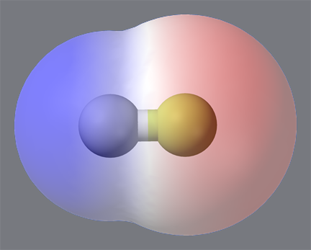Quantum chemistry made easier
The quantum mechanical wave function in Schrödinger’s equation contains everything you need to know about a many-body system, but actually calculating properties such as the energies of electrons in a molecule can defeat even the most powerful supercomputers. For fifty years, researchers have known that such calculations should be possible using a different approach, one that involves the density matrix—a statistical description that avoids the need to use the full multielectron wave function. David Mazziotti of the University of Chicago now reports in Physical Review Letters his success at an improved density matrix calculation of the ground-state energies and other properties of several molecules, yielding better answers with much higher computational efficiency.
Since the late 1950s, theorists understood that ground-state molecular energies could be calculated with the use of a density-matrix approach that took electrons two at a time, and then summing over all electron pairs. The advantage is that a full -electron calculation scales exponentially as , whereas computing these properties with a two-electron density matrix would only scale polynomially with . Such scaling means a huge payoff in the computational resources needed. But ensuring that these so-called reduced density matrices properly represent a full electron system has been elusive.
Building on his own group’s recent work and that of Christian Kollmar at the Rijksuniversiteit Groningen, Mazziotti has developed a new form of the reduced density matrix that results in not only significant computational speedup, but also much higher accuracy in the results. The method permits better calculations of ground state energies, bond distances, and bond breaking for a range of molecules including , , and , and should find wide application in computational chemistry. – David Voss





